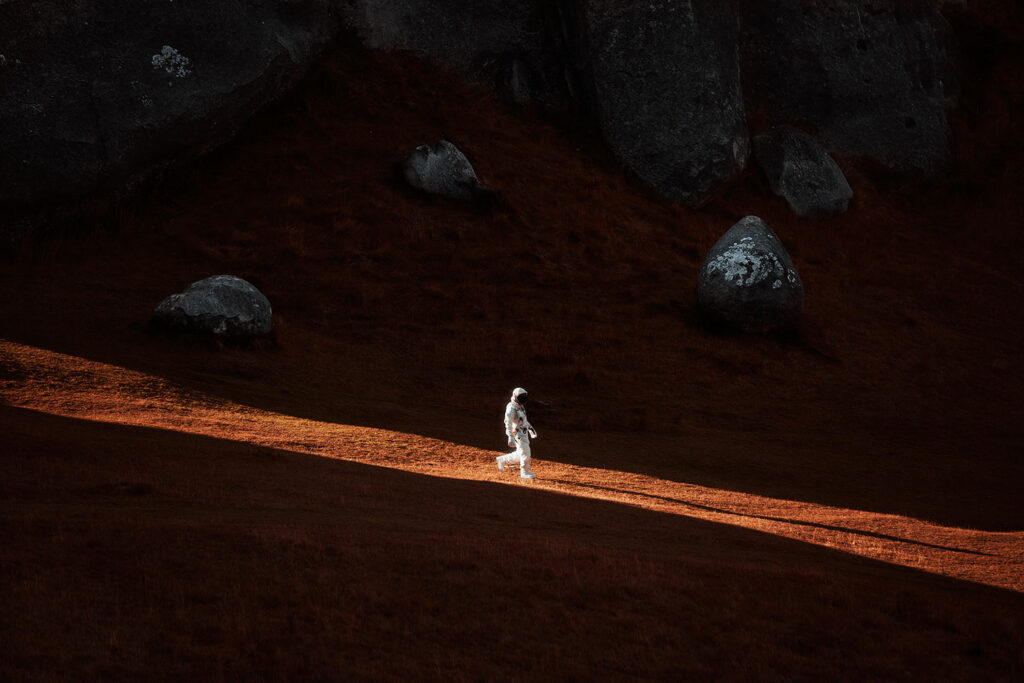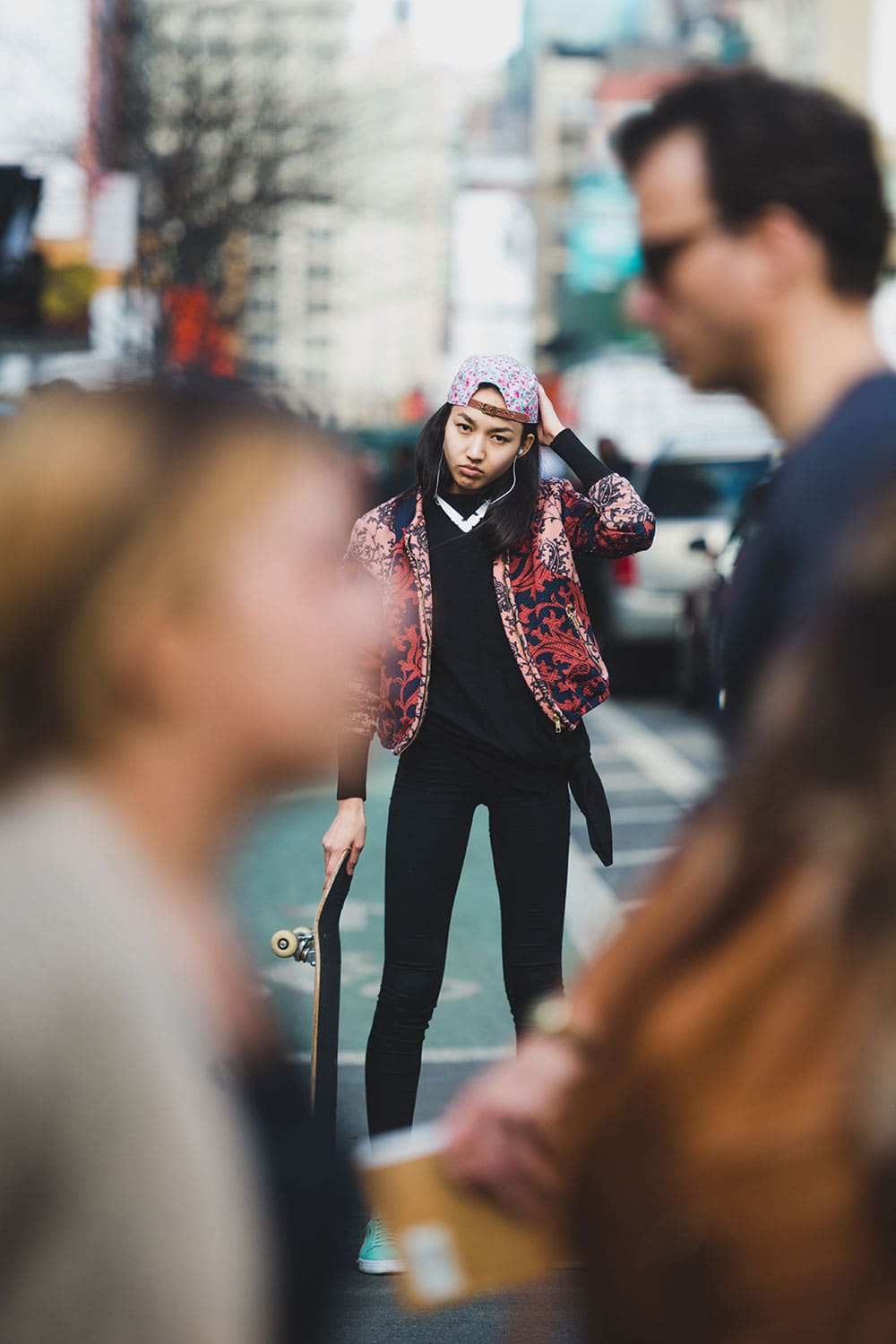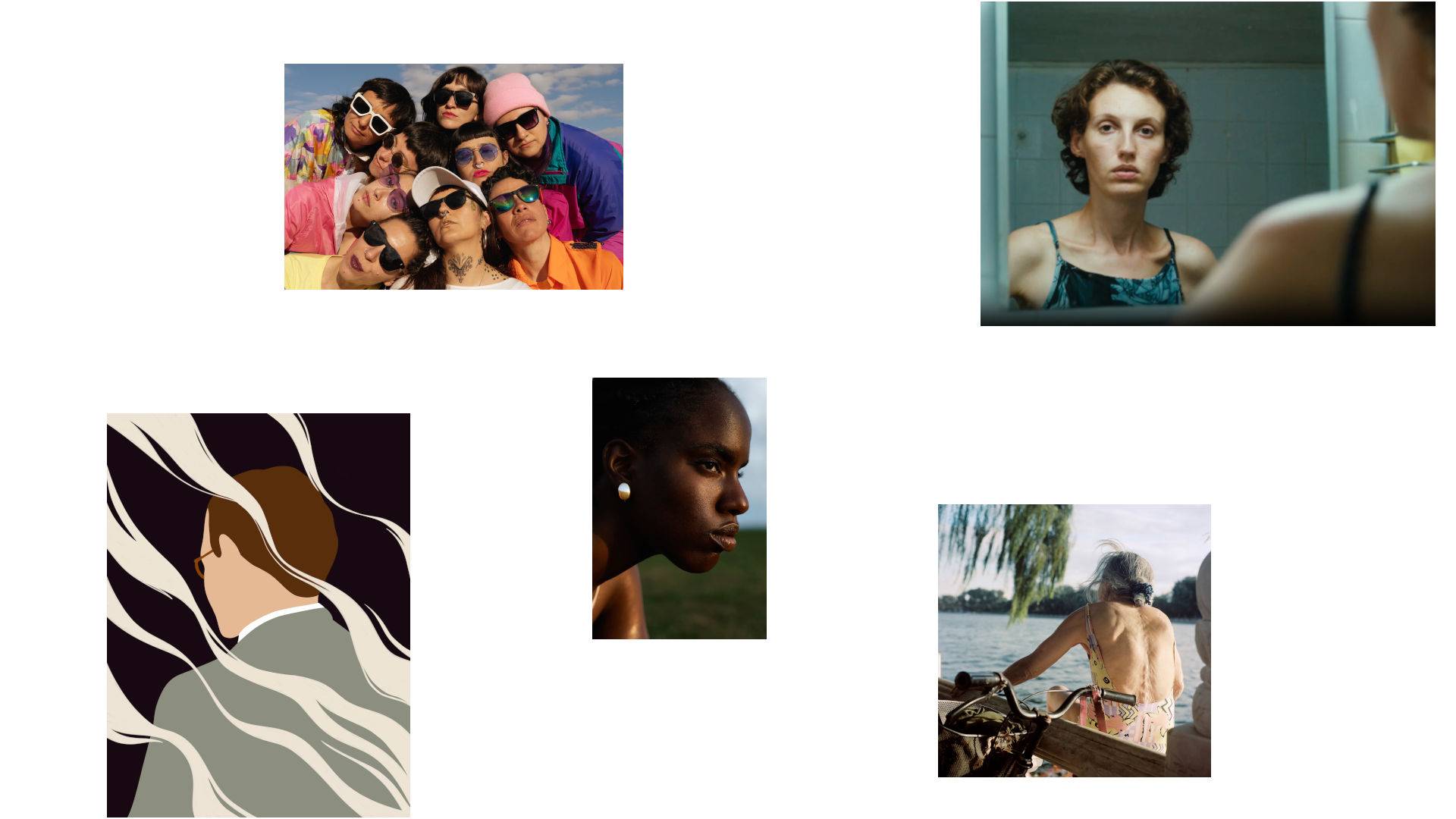Stock photography is a term that has become baked into the world of digital marketing, particularly in the last decade. As businesses capitalize on access to a wider global audience via online presence, the demand for better quality marketing materials has skyrocketed so has the industry that supplies that material.
In order to understand the role that stock photography has played in digital marketing and advertising, it’s important to understand what it is, how it works, how it has impacted companies and how it will continue to influence industries far and wide.
What are stock images?
First and foremost, what does the term “stock photography” even mean? At its most basic definition, stock photography is an industry that creates and sells imagery in the form of photos, illustrations, or videos and can be purchased for use through various licensing models (more on what stock footage is here).
Customers pay a fee to buy the rights to legally use the stock photos or videos they want, incorporating them into their marketing strategies and personal projects as needed. This fee is then split between the artist that took the photo or footage and an agency or service that the artist uses to manage the sales of the photo to customers. Customers get to download the image and start using it in minutes, photographers (usually) retain their copyright on the material, and agencies make a buck facilitating the transaction.

Type of stock photography
There are three main types of stock photography that have evolved since the industry’s beginnings at the start of the 20th century.
Macrostock: Macrostock photography is also known as traditional stock photography. Since macrostock is exclusive, customers pay a higher fee to license the imagery so they hold exclusive rights to that particular image, maintaining the “uniqueness” of the photos being used. In some cases of macrostock, images aren’t totally exclusive (meaning that a very limited number of customers can purchase the rights to the same stock photo).
Midstock: Midstock photography is the middle of the road option that provides stock photography priced between macrostock and microstock. It is often used online and offers exclusive and non-exclusive options for use of imagery.
Microstock: Microstock photography has a low price point because it usually removes exclusivity from the equation. This model is relatively new to the scene and has exploded in growth since 2000 as more stock agencies used the advances in technology to establish themselves. Microstock is sold for lower prices at a greater volume, meaning that multiple customers can purchase the rights to use microstock imagery.
That’s all well and good, but why is stock photography even a thing? How did it become the huge industry that it is today?

Stock photography: a brief history
Stock photography has been around since the 1920s when newspapers and magazines began reproducing photographs with the help of the printing press and technological advances like halftoning. Sometimes, if access to an image was limited or difficult to come by, large enough operations would stage their own reenactment of a scene to capture and use the imagery and, thus, the original stock photo was born.
In 1920, H. Armstrong Roberts started the first stock photography agency. It concentrated on generic subjects that could be reused in advertising. Popular themes included: images of men and women, happy children, people smoking cigarettes or cigars, common foods like bread or butter, soft drinks, cleaning or washing, and hygiene (brushing teeth or shaving).
Almost all of the images were shot on 4×5 cameras with black and white film, considered the latest technology of the time.
As more and more of these images were created, they began to be stored and reused. The first stock photography libraries were founded in the 1920s and 30s, the biggest of which housed 15 to 20 thousand images which were selected based on their likelihood to sell multiple copies.
Between the 1940s and 1980s, the industry continued to grow steadily. Archives were founded to house photographs and negatives, especially after World War II, becoming a primary resource for historical documentation. In 1945 a cataloging system, known as the Gibbs-Smith system, was established using keywords and classifications to index the images in these archives.
The 1990s brought with them the computing revolution and the physical archives that were once home to the first stock photos were transformed by servers for storage and indexing online. Stock libraries became stock agencies and royalty-free and rights-managed licensing options became standards for the industry.
As more companies entered the market, the larger stock photo agencies began to consolidate. In the 2000s, microstock agencies started offering more affordable alternatives to the traditional macrostock photography which had dominated the market up until that point. These microstock agencies initially sold physical CD-ROMs and, more recently, began charging subscription or one-time fees for online downloading access. This allowed them to offer image licensing for much lower prices.
The industry evolved further, with more acquisitions and mergers along the way, to the current stock photography ecosystem. This growth has resulted in a much more competitive market, with many of the large microstock agencies responding by lowering their licensing fees and payout percentages for stock photographers and cinematographers in an effort to hold onto their market share.
A different take on the modern stock photo agency
Stocksy was founded in 2013 with a new twist on contemporary stock agency business models. Established as a platform co-op, we employ ethical business practices and ensure that our shareholder artists receive fair pay for their work — 50%-75% of all licenses go directly into contributors’ pockets. The sense of community and ownership felt by our members drives a greater level of creative ferocity into their work, resulting in inspired imagery of the highest quality.
How stock photography works
Now that we have a basic understanding of what stock photography is and how it came to be, let’s look closer at how stock photography actually works in practice.
By using stock imagery as digital collateral in marketing campaigns, companies are able to save time, money, and human resources they would spend on planning out a project and hiring a photographer to create custom imagery for a particular campaign. This, in part, has made stock photography a pillar of modern digital marketing efforts.
A large supply of stock photography is needed in order to build up a bank of imagery to sell to customers. Stock photographers, the original creators of the imagery, submit their work to stock agencies. Stock agencies display the photographer’s work and sell it to customers using a licensing model.

Type of stock photography licenses
Three main types of licenses are most commonly seen in the industry.
Public domain (PD): Public domain licensing means that the image is free to use (and no fee can be charged to use it) for either commercial or personal purposes. The public domain typically has works which no longer have active exclusive intellectual property rights (due to expiration, forfeit, or inapplicability). This means that copyright claims cannot be applied to the work and it is, therefore, free for anyone to use.
In recent years, some stock agencies and services offer imagery that is free to use via this type of non-exclusive licensing.
Royalty-free (RF): Royalty-free licensing is a copyright license in which rights to use the work can be purchased through a one-time payment to the licensor (sometimes with some restrictions). Customers are able to use the imagery numerous times without having to pay for additional licenses. These rights are usually not offered on an exclusive basis unless additional features like extended licensing and market freeze options are included to cater to customers that want exclusivity.
RF-licensing is commonly used by stock agencies that have a subscription-based or microstock business model. Images cost anywhere between $1 and $20.

Rights-managed (RM): Rights-managed licensing contrasts royalty-free licensing as it provides restricted use of stock photographs. Customers are able to purchase one-time rights to a photo that may be further restricted by the type of copyright license being purchased. For additional uses of an image, customers will need to purchase additional usage rights. Also known as licensed images, RM licenses are offered on a non-exclusive or exclusive basis, depending on the platform being used.
RM-licensing is also commonly used by stock agencies, but has more specific conditions to usage rights and often comes with a higher cost. Images cost anywhere between $50 to $1,000+.
Microstock agencies usually use RF or RM licensing models to sell their stock photos. Some charge a one-time fee or offer subscription-based pricing models while others use credits or “top-up” systems to cover fees for selected images.
Stock photography as a marketing tool
So that’s the theory behind what a stock photo is and the basics of how it works, but let’s dive a little deeper. What does stock photography actually do for a customer who has purchased it?
Besides saving them time, money, and the effort involved in creating original imagery for a campaign, stock photography provides a nearly bottomless resource of versatile images and clips to use for anything from a full-blown marketing campaign to a personal use poster for next Saturday’s garage sale.
Stock photos can fill a specific gap in a project or marketing campaign, but they can also help create and direct it as well. For designers and art directors, a quality stock photography catalog or collection can function as a very important and inspirational tool in the creative process.
Being able to access and download imagery on-demand makes sense for businesses, both big and small. Advertising agencies are obvious buyers of stock photography, but so are small businesses with bootstrapped budgets, freelance graphic designers, writers, bloggers, social media influencers, and so on. If images are involved, be it printed marketing collateral like an event flyer or pamphlet or an online landing page or blog post, stock photography is likely a step in the process, even if it’s not obvious that it is. (And, ideally, it won’t be obvious.)
As the industry has become more saturated though, themes in imagery emerge every year. When an image or certain style of photo becomes popular, stock photographers tend to try to produce similar shots because they know they are popular and will sell well. However, this creates a “creative block” in the industry that tends to replicate the same type of shot until something else takes over to begin influencing aesthetics. The modern stock photography industry is currently seeing more examples of this, particularly in a time when grassroots revolutions and social change are becoming more frequent and the imagery that is captured to reflect society shifts with it.
Stock photography as an influencer
Overly-enthusiastic colleagues in suits, happy ladies eating plain salads and other cliché images can be found at almost every stock agency. This isn’t a bad thing — some images are quintessential captures of the way we tend to envision an idea, concept, event, or activity. It’s just important to be aware of the biases that come with that and how they influence the way the world around us is displayed.
Since we are a visual species, it’s no wonder that imagery is such a critical part of how we interact with and understand the world. This is why stock photography plays an essential role, not just in marketing, but in how we perceive the things around us in general.
Trends in stock photography
The past few years have seen trends focusing on authenticity and ethical marketing. While it might seem cliché, this trend is catching on in many areas and, as the average consumer becomes more aware of social climates and how they are shifting, they’ve begun demanding that companies follow suit.
Sustainability, environmental consciousness, and a less consumption-focused lifestyle are becoming bigger trends in today’s marketing strategies. Wider demands for equal representation of people across the spectrum of race, ability, sexual orientation, and gender are becoming more prevalent and the imagery being created is starting to respond. Engaging with politics is another emerging trend as activism and protesting become a more prominent part of daily life. More stock photographers are looking to capture images that represent the power of peaceful protest and of people coming together to break down barriers and negative societal norms
This is again reflected in the types of bodies contemporary stock photography is showcasing. By making different body types visible, questioning stereotypical gender roles, and allowing real people to portray themselves in the way that they want, stock photographers are able to influence the way we see the world.
A photo is a representation of a person or place or thing and ensuring that the representation is an accurate one, even as just a snapshot in time, is a great responsibility that both stock photographers and stock agencies have, as do their customers and the marketing collateral they produce.
Redefining how photographers work
Another aspect of stock photography’s influence can be seen in the way the industry facilitates (and sometimes hinders) the way photographers work. Arguably a pioneer of “the gig economy”, stock photography has always relied on freelance content contributors to succeed.
In the 1920s when macrostock began to take off, the industry had a small number of key professional photographers to supply it. As it grew and technology advanced, more amateur photographers began to have access to affordable tools, creating images that were of good enough quality to submit to the midstock and microstock agencies.
These days, camera and smartphone technology have advanced to the point where professional and amateur photographers are able to submit their work to stock agencies and get paid for it, enabling a wider number of people to engage in the gig economy and make an income outside of the traditional workplace. It’s more a question of whether or not they are getting compensated fairly.

How to make money selling stock photography
The structure of the stock photography industry has always had various aspects to it. When it comes to selling photos, there are different perspectives to consider.
As a stock photographer: Making money with stock photography can be both a blessing and a curse. Some photographers use the industry as a way to make some side money with their part-time passion or hobby while others dedicate their full-time bandwidth to establish a studio that specializes in creating stock photos. Others combine their passion as photographers with their other niche passions, like conservationism, to create themed content (that sometimes also supports a greater cause).
How to become a stock photographer
There are plenty of tips available online as to what makes a great stock photo or stock video. Things to keep in mind are ensuring high quality of photos,getting model releases if shooting people, avoiding branding and logos, and coming up with creative shots that are unique, but broad enough to be used in a wide variety of ways. It’s often best to find your own specialty or niche and create a cohesive portfolio of imagery. Each agency will have its own submission guidelines for the specifics. You can read our contributor application FAQ here.
How much does stock photography pay?
There is quite a wide range of royalty payout percentage in the industry. Stocksy artists earn 50% Royalty on Standard Licenses and 75% of Extended Licenses. Artists also receive profit-sharing in the form of patronage returns when the co-op has a surplus. Amounts are determined based on your contributions to the co-op through the sale of your photos and/or footage. This allows our co-op members to build viable businesses and lifestyles around stock imagery.

By submitting their work to stock agencies and getting it in front of the global audience, stock photographers are able to generate income whenever one of their images sells. However, it’s important to weigh the pros and cons of how each of these stock agencies will treat the work, what rights the artist is giving up, and how much of the licensing fees they’ll actually receive. Different stock agencies treat these factors differently, depending on their business model so reading the fine contractual print is a must.
Agency and fee-free stock photos: Some services (like Wemark) skip out the middleman altogether and allow photographers to upload and license their images without using an agency. Other services like Unsplash and Pixabay offer free stock photos by asking photographers to voluntarily contribute their work, releasing copyright in the process. While these can be ways to build up a portfolio and practice the craft, they’re not great ways to get paid for creative content at a price that reflects its value and quality. In addition, model releases and indemnity are not guaranteed without the aid of an agency and artists can get into some hot water without proper legal assurances.
How stock agencies fit in: As a stock agency, how much money gets made through stock photography really depends on the business model that’s being used. Macrostock agencies rely on exclusivity to garner a higher price tag for imagery while midstock and microstock agencies rely on sheer amount of options. Charging lower licensing fees for non-exclusive usage rights also allows them to sell the same image to multiple customers, which is great for the stock photographer, but may not be preferred by customers who want to create unique campaigns or marketing material.
With the market becoming more accessible as camera phones produce high-quality shots and more people become internet/tech-savvy, there seems to be an endless stream of images pouring into stock agencies. It’s increasingly up to the customer to discern which ones are worth purchasing, which can be overwhelming when the sheer amount of choice is so high.
Buying stock photography: On the hunt for that picture perfect shot? A stock agency will more than likely have what you need, depending on what you’re willing to pay for it. Exclusivity means higher licensing fees (and higher payouts as a photographer). Non-exclusivity is offered by most of the microstock agencies, thus appealing to a wider photographer base and usually offering a much wider selection to customers at a lower price point. However, it can be challenging for photographers to make a living off of licensing payouts from this revenue stream these days.
The changing advertising landscape
As a buyer of stock photography, a quick search will hopefully get you what you’re looking for. Most generic shots exist in microstock collections and can be purchased in just a few clicks. But generic shots are becoming less relevant in today’s market. The millennial and GenZ generations are beginning to flex their buying power and are rejecting the same old tried and true ways of advertising. This is, in part, because they simply can’t afford things like previous generations could, requiring ad agencies, marketers, and their stock photo suppliers to change their strategies too.
These generations are driven by values that favor inclusivity, diversity, and equality for all, leading the shift in their social climate. While they often can appreciate a classic meme and are known to ironically point and laugh at life’s mishaps, they truly care about more than surface value content and expect that to be reflected in the companies they support.
Being tech-savvy, GenZ is also much more well-equipped to verify marketing claims and hold companies accountable through social media channels and by virtue of being technologically hyperconnected. These advances allow them to be better-informed consumers that are slowly becoming a larger part of the labor force, compounding the trickle-down effects on traditional advertising methods.
How tech keeps changing the business
Speaking of tech, stock photography is a prime example of how the digital revolution has impacted industries of all types. This industry has especially benefited from more advanced hardware, software, and hyperconnectivity. Better cameras, especially on the mini-computers hanging out in everyone’s pockets or bags, produce better quality images. Being constantly connected to the world wide web means uploading those images is quick and easy. Selling them online (independently or through stock agencies) means nearly anyone with a good eye for a great shot can make money. And for those who are serious, more affordable professional photography equipment means that a few thousand dollars can go a long way to getting shots worth selling exclusively.
Advances in tech have also enabled stock agencies to progress as machine learning in search begins to offer more granular selection through the insane amount of data created every day by people across the planet. With things like searching by color, visually similar recommendations, and more intuitive artificial intelligence powering how we search and find images, innovation in tech will continue helping stock photography become bigger and more accessible.
And, while millennials are accused of killing a lot of things, they are bringing some classic things back from the dead. Film photography is seeing a resurgence lately and the nostalgia for the days of polaroids is felt in the vintage filters of social media.
The question is, where will we go from here?

The future of stock photography
Technology will keep getting better, producing faster, more affordable hardware and software that will impact the stock photography industry in many ways. API integrations with massive online databases that have unlimited amounts of images available to sort through and download in a click could force changes in the industry’s structural or pricing models. Innovations in the way artists, photographers, videographers, and other content creators operate and get paid could disrupt the industry. How the global audience continues to grow and shape the worldwide marketplace will also play a factor.
Maybe the future of stock photography lies in custom content, with requests sent into stock agencies to create and deliver the right custom shot for an accessible price point. Disruptive technologies like blockchain could offer new ways for photographers to license their work, skipping out the stock agency altogether. Augmented reality and virtual reality will add another layer of complexity into how we view, capture, and portray the world around us. Or perhaps we’ll see another revived nostalgic trend back to 2D as the talented illustrators of the world experience a renaissance.
While the future of the stock photo seems fairly secure, a rising star in the industry is that of the stock video clip. As the digital revolution continues, more people are attracted to short videos in the same way they were attracted to stunning stills. GIFs, Vines, Snapchats, Stories – the short video clip is definitely the cool new kid on the stock block.
Whatever the future holds, stock photography is certainly not going anywhere anytime soon. It has become an integral part of how we see the world, beyond the marketing and advertising lens through which it is often portrayed. With the change in the social climate and rise of new generations, it’s clear to see that stock photography as a mirror of society has more influence than it may appear to at first glance.

Stock photography you can feel good about
These days, we see a growing desire for and response to clever, inclusive, and positive messaging. As in-your-face blatant advertising continues to die a slow death, it’s important for designers, marketers, art directors, photographers, and stock photography agencies to recognize and jump ahead of the curve.
By selling or buying stock photography from agencies that offer quality content, while still compensating their content creators fairly, the average company or individual looking for a stock image for their next project can help kill off malicious marketing and annoying advertising.
Advertising is necessary in many ways. But the way we advertise (and the way we allow companies to advertise to us) has a lot of influence that needs to be recognized and acknowledged. Supporting companies and brands that are responsible, ethical, and authentic are the first steps to changing the industry and the ways in which it operates. Creating, selling, and paying for imagery that reflects those values is a key contributor to the change.























































